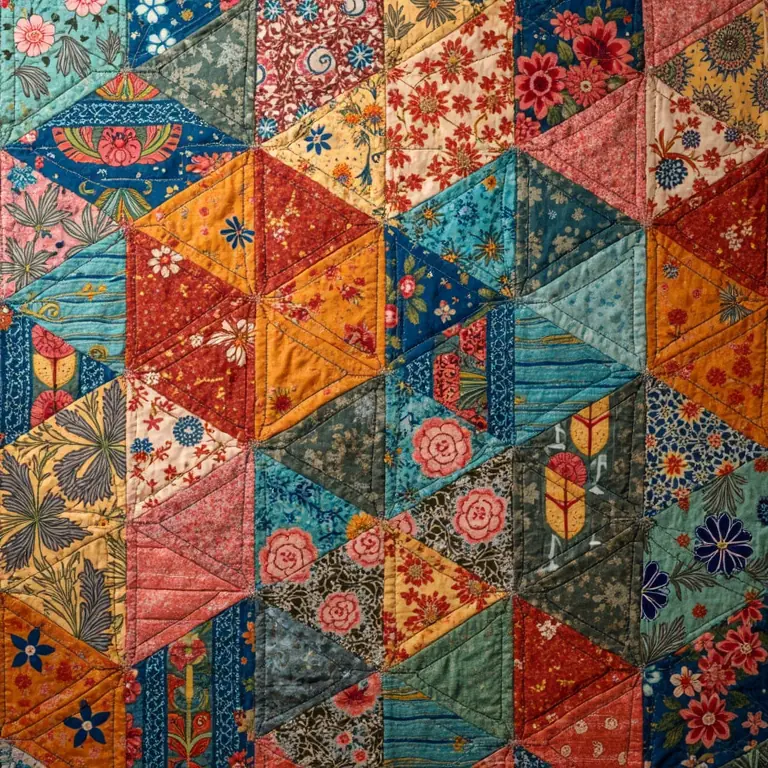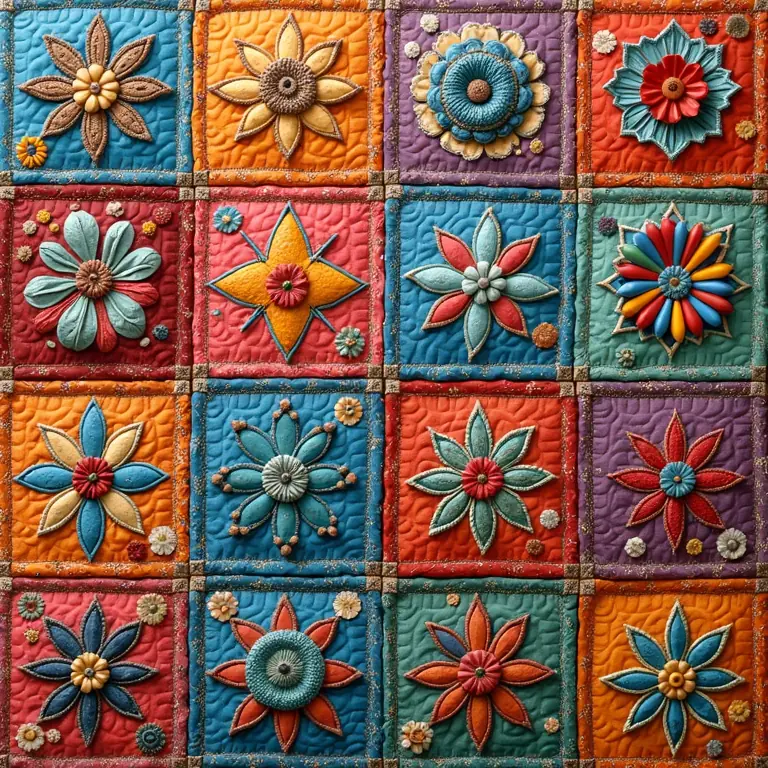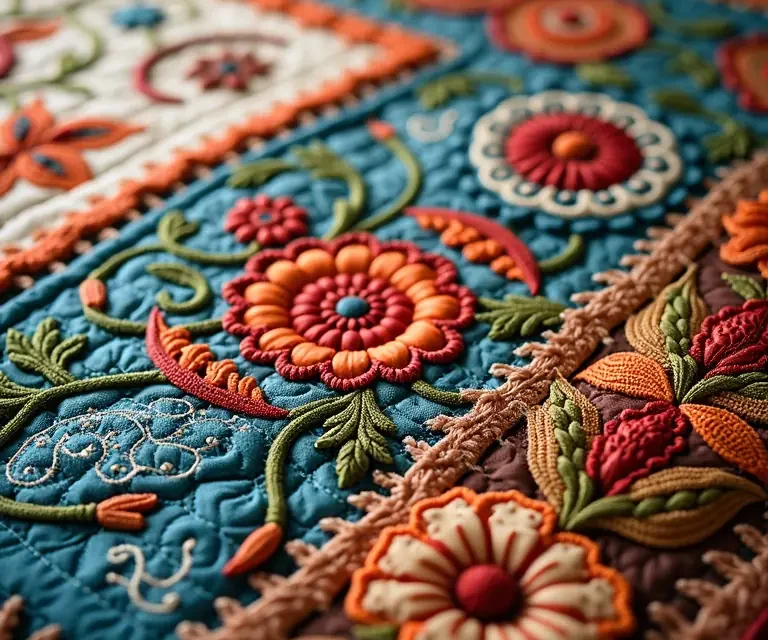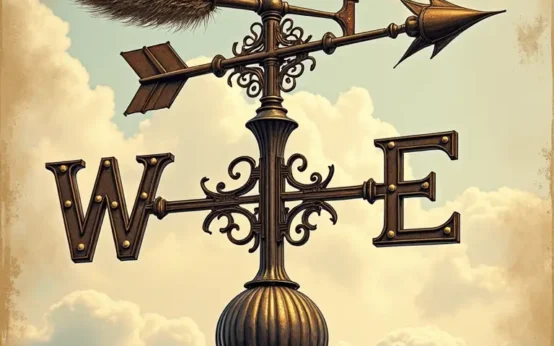Quilting, at first glance, often appears as a charmingly haphazard collection of fabrics sewn together. However, beneath the surface of vibrant colors and intricate designs lies a surprisingly consistent world of patterns, each with its own history, mathematical underpinnings, and cultural significance. This article delves into the unexpectedly consistent patterns found in traditional quilting, exploring their origins, construction, variations, and the stories they tell. We’ll look beyond the aesthetic beauty to understand the underlying structure and the reasons these patterns have endured for generations.
A History Rooted in Necessity and Creativity
The origins of quilting are complex and multifaceted, predating modern textile production. While decorative patching existed in earlier forms, the quilting we recognize today emerged primarily from necessity. Early quilts served as crucial bedding, providing warmth and protection against the harsh conditions of life. The earliest surviving examples, dating back to medieval Europe, were often functional rather than decorative, constructed from layers of linen stuffed with wool or flax. These were known as ‘wholecloth quilts,’ featuring intricate stitching patterns but without the pieced designs we associate with traditional quilting.
The real evolution of pieced quilting began with the availability of printed fabrics in the 18th and 19th centuries. As trade routes expanded and textile production increased, fabrics became more accessible, allowing quilters to move beyond simple functionality and embrace creativity. This period saw the rise of numerous distinct patterns, often reflecting the quilter’s personal experiences, community traditions, and available materials. Scraps were rarely wasted; quilting became a resourceful way to utilize leftover fabric from clothing and household items, transforming them into beautiful and practical heirlooms.
The Building Blocks: Common Quilting Patterns and Their Characteristics
Log Cabin
Perhaps the most iconic and recognizable quilting pattern, the Log Cabin, embodies the spirit of pioneer life. Its construction is deceptively simple: strips of fabric, representing ‘logs,’ are sewn around a central square or rectangle. The arrangement of light and dark ‘logs’ creates a variety of visual effects. Traditionally, the center square represented the hearth, the heart of the home, with the darker logs symbolizing the challenges of life and the lighter logs representing hope and prosperity. Variations include Courthouse Steps, where rows of logs are offset to create a stepped effect, and French Log Cabin, which uses wider logs and more intricate arrangements.
The Log Cabin pattern is mathematically fascinating, offering opportunities for exploring geometric progressions and color theory. It’s also incredibly versatile, allowing quilters to utilize a wide range of fabrics and create designs that range from rustic to sophisticated.
Nine Patch
The Nine Patch is another foundational pattern, built from nine equal-sized squares arranged in a 3×3 grid. Its simplicity makes it ideal for beginners, but its potential for variation is enormous. By changing the fabrics within each square or combining different Nine Patch blocks, quilters can create a diverse array of designs. The Nine Patch often serves as a building block for more complex patterns, such as variations of the Ohio Star. Historically, the Nine Patch was a common choice for using up small scraps of fabric, and its symmetrical design lent itself well to balanced compositions.

Flying Geese
The Flying Geese pattern, characterized by its V-shaped blocks resembling a flock of geese in flight, is a dynamic and visually striking design. It’s typically constructed using half-square triangles (HSTs), a fundamental quilting unit. Creating Flying Geese requires precise cutting and sewing, but the resulting pattern is well worth the effort. Variations include the Mariner’s Compass, which incorporates Flying Geese into a circular design, and the Stormy Seas, which uses contrasting colors to create a turbulent, wave-like effect. The pattern’s name evokes images of migration and freedom, often associated with the American frontier.
Pinwheel
The Pinwheel pattern, as its name suggests, features blocks that resemble spinning pinwheels. It’s typically created using four half-square triangles arranged around a central square. Pinwheels are known for their cheerful and energetic appearance, often utilizing bright colors and playful fabric combinations. Variations include the Carpenter’s Wheel, which features larger pinwheels and a more geometric design, and the Sawtooth Star, which incorporates additional triangles to create a more complex starburst effect. The pinwheel’s circular motion symbolizes joy and optimism.
Ohio Star
The Ohio Star is a classic pattern built upon a foundation of squares and triangles. While seemingly complex, it’s often constructed using variations of the Nine Patch and Flying Geese patterns. The resulting star-shaped design is visually appealing and versatile. Historically, the Ohio Star was a popular choice for quilts made to commemorate special occasions, such as births, weddings, and anniversaries. Its symmetrical design and balanced composition contribute to its enduring appeal.
Mathematical Principles at Play
Beyond their aesthetic appeal, traditional quilting patterns are deeply rooted in mathematical principles. Geometry, symmetry, and proportion are fundamental to their construction. Many patterns rely on the precise calculation of angles and fabric dimensions to ensure accurate piecing and a cohesive design. For example, the construction of half-square triangles (HSTs) involves understanding right triangles and the Pythagorean theorem. The Log Cabin pattern demonstrates geometric progression, with the addition of each ‘log’ increasing the overall size of the block. The creation of circular designs, such as the Mariner’s Compass, requires understanding angles, arcs, and radii.
The repetition of shapes and colors within quilting patterns also reflects mathematical concepts such as tessellation and symmetry. Tessellation, the arrangement of shapes to cover a surface without gaps or overlaps, is evident in patterns like the Nine Patch and the Brick pattern. Symmetry, the balance and harmony of design, is a key element in patterns like the Ohio Star and the Pinwheel. Understanding these mathematical principles not only enhances the quilter’s ability to construct accurate and visually appealing quilts but also provides a deeper appreciation for the underlying structure of these time-honored designs.

The Language of Color and Fabric
Color and fabric choices play a crucial role in the storytelling aspect of quilting. Throughout history, colors have carried symbolic meanings, and quilters often used specific colors to convey messages or emotions. For example, red traditionally represented passion, courage, and vitality, while blue symbolized tranquility, loyalty, and spirituality. Green represented growth and renewal, and yellow conveyed happiness and optimism. Fabric choices also reflected the quilter’s social and economic status, with finer fabrics often reserved for special occasions or heirloom quilts.
During the 19th century, quilts served as a form of communication and social commentary. Quilts made during the abolitionist movement often incorporated coded messages and symbols to support the Underground Railroad. Album quilts, collaborative projects where friends and family contributed individual blocks, served as visual records of relationships and community ties. The use of specific patterns and colors could also convey personal stories or commemorate significant events. For example, a quilt made from scraps of a loved one’s clothing might serve as a poignant reminder of their presence. The ‘crazy quilt’ style, popular in the late 19th century, embraced asymmetry and unconventional materials, reflecting the changing social norms of the Victorian era.
Regional Variations and Cultural Influences
While core patterns remain consistent, quilting traditions exhibit significant regional variations and cultural influences. Quilting styles differ across countries and even within different regions of the same country. For example, Amish quilts are renowned for their minimalist designs, solid colors, and impeccable craftsmanship. Appalachian quilts often feature bold colors, intricate patterns, and a strong connection to the natural landscape. English paper piecing, a technique where fabric shapes are stitched around paper templates, is a traditional technique originating in England and still widely practiced today.
Cultural influences also play a role in shaping quilting traditions. African American quilts often incorporate vibrant colors, improvisational designs, and storytelling motifs rooted in African cultural heritage. Mexican quilting, known as ‘colcha,’ features intricate embroidery and bold floral designs. Japanese quilting, known as ‘boro,’ utilizes patching and mending techniques to create visually textured and functional textiles. These regional and cultural variations demonstrate the adaptability and versatility of quilting, reflecting the unique experiences and artistic expressions of different communities.
The Enduring Legacy of Traditional Quilting
Traditional quilting is more than just a craft; it’s a cultural heritage, a form of artistic expression, and a testament to the resourcefulness and creativity of generations past. The consistent patterns found in traditional quilting represent a shared language of design, a common thread connecting quilters across time and space. These patterns offer a tangible link to history, allowing us to glimpse into the lives and experiences of those who came before us.
Today, traditional quilting continues to thrive, with quilters around the world preserving and innovating upon these time-honored techniques. Modern quilters are exploring new ways to combine traditional patterns with contemporary fabrics and designs, creating quilts that are both beautiful and meaningful. The enduring legacy of traditional quilting lies in its ability to connect us to the past, inspire creativity in the present, and provide a source of comfort and beauty for generations to come. Each stitch tells a story, and every quilt is a testament to the enduring power of human artistry.
Whether you’re a seasoned quilter or a curious beginner, exploring the world of traditional quilting offers a rich and rewarding experience. By understanding the patterns, the history, and the mathematical principles behind this beloved craft, you can unlock a deeper appreciation for the stories woven into every stitch.


 The Surprisingly Consistent Science of Historical Weather Vanes – Art, Meteorology & Directional Lore
The Surprisingly Consistent Science of Historical Weather Vanes – Art, Meteorology & Directional Lore